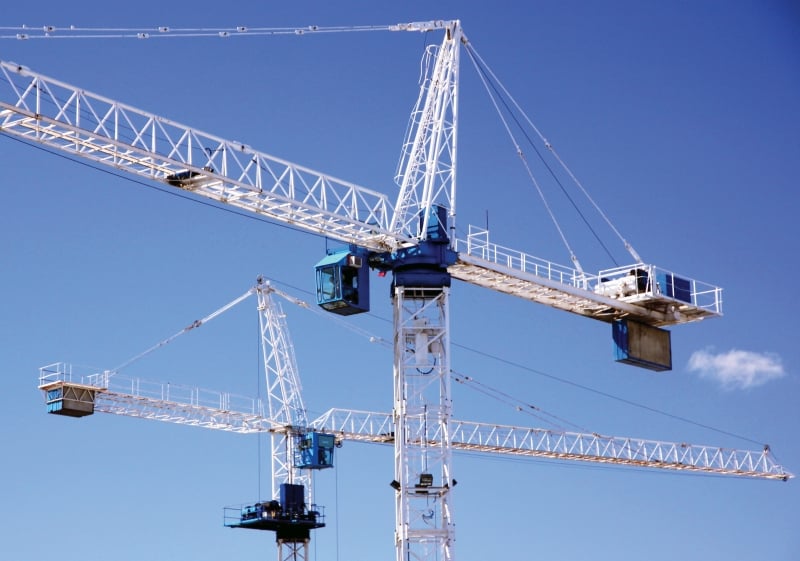The Toronto Transit Commission’s (TTC) 8.6-km Spadina subway extension epitomizes much of what can go wrong in a major infrastructure project: it is about $400 million over budget and many months behind schedule.
All parties to an infrastructure project aim to be “on time and on budget.” Yet too often the scenario in the construction phase comprises cost overruns and delays. The result can be protracted and costly litigation among the parties.
However, says Sharon Vogel, a partner at Borden Ladner Gervais LLP in Toronto, the P3 model is actually less prone to litigation than the traditional model. “The projects tend to be more complex and large in engineering terms so there is more potential for issues to arise but, given the contractual provisions in many of those P3 projects, I would say the potential for litigation [in Canada] has actually decreased.”
Karen Martin, a partner at Dentons Canada LLP in Vancouver, says the major litigation risk she has seen in recent years stems from a “disconnect between the procurement/contract negotiation phase and the actual construction phase.” After the contracts are negotiated and signed, the project team’s makeup often changes. A new team may become responsible for building the project.
“What I’ve seen in the last five to seven years is that the construction team puts the contract in the drawer – typically without reading it – and proceeds to build the project based on their own experience and what they think is best,” says Martin.
The owners may feel they are paying for something they’re not getting because the construction team has gone and done their own thing. “Yet they’re reluctant to bring lawyers into the picture,” says Martin, “because historically you only have lawyers involved when you have litigation.”
More sophisticated clients try to avoid this disconnect by making sure there is a transfer of knowledge from the contract negotiating team to the construction team. Then that team can manage the construction as it sees best, but in keeping with what was contractually agreed.
In most construction contracts, when contractors have a claim for a delay or a cost overrun they must give timely notice, e.g., within seven days of first experiencing the delay. Often, however, contractors fail to give that notice because they’re too focused on trying to solve the problem. They may only belatedly ask the owner for an extension of time and additional payments.
Litigation frequently arises over whether a contractor’s delay claims should be denied because they failed to give timely notice. If, say, the contractor was delayed because the owner’s consultant was taking too long to answer the contractor’s questions, the owner could have pressed the consultant for a more timely response. Failing to inform the owner until the end of the construction leaves it too late for the owner to resolve the problem.
In addition to cost overruns, delays are a huge pitfall for potential litigation. There has been increased public pressure in recent years for infrastructure projects to be completed on time. Also, the funding given to municipalities by provincial or federal governments for infrastructure typically has an end date by which it must be spent.
This means that infrastructure contracts often carry a liquidated damages clause — the contractor is required to pay the project consortium’s lender X dollars per day for every day the project is late. The contractor will then try to pass the penalty on to the sub-contractor or designer whom they consider responsible for causing the delay. “Two weeks late in the context of a P3 could have hundreds of thousands of dollars of consequences,” says Glenn Ackerley, a partner at WeirFoulds LLP in Toronto.
Unexpected soil conditions are another major issue that can arise. Unless the ground is fully excavated before the construction phase begins, the parties can’t know for sure what type of soil will be underneath the project. A geotechnical engineer will drill bore holes around the site but there is never perfect knowledge of what is beneath the ground.
Almost every project runs into unexpected soils, either contamination or a different calibre of soil, e.g., silty soil, which needs to be replaced with sand or gravel. Historically, contracts allocated all the risk for soil problems to the contractor, but recent contracts try to balance the risk more fairly by saying that a “reasonable and prudent contractor,” by reading the soils report, should have known bad soils were there.
In the case of transit infrastructure projects, the single biggest issue that may arise is the presence of utilities. “If you’re digging a subway tunnel, then sewers, gas connections and fibre-optic cable may have to be moved,” says Ackerley. “The contractor typically doesn’t have influence over those utilities and yet is expected by the owner to work with them to get these service connections out of the way. That’s a recipe for real challenges.”
Another common cause of dispute is insufficient design work before the construction phase. The owner and the design consultant initially develop a highly conceptual design and consult the stakeholders. Then the designer develops construction drawings that can be given to the contractor.
Too often, however, the contractor finds, as the construction stage begins, that there’s not enough detail in the construction drawings. Waiting for the designer to provide more detail can result in delays, and the new elements may also result in cost overruns due to additions or changes required in the construction. Under the P3 infrastructure model, the owner’s only exposure is for the amount they agreed to pay at the outset. The fact that something is missing becomes an issue between the contractor and the designer.
The contractor may contend that the full design information should have been provided at the time the contractor submitted his or her price. Says Ackerley, “The contractor may turn to the architect and say, ‘you’re going to have to pay for the entire cost of what you overlooked, because we’re not going to get any additional money from the owner.’ The potential exposure of the design professionals to the risk of errors and omissions is much higher on a design-build project than in the traditional model.”
Also, P3 projects are susceptible to interpretive disputes over the requirements contained in the Project Specific Output Specifications (PSOS). The design builder is responsible for delivering a project that meets the requirements but they may be ambiguous or open to interpretation.
Dispute Resolution
“All construction lawyers will tell you that disputes are inevitable,” says Carolena Gordon, at Clyde & Co Canada LLP in Montréal. “They happen frequently and it’s unrealistic to think they’re not going to happen.”
Typically, in a construction dispute, litigation is initiated at the completion of the project. However, in the hope of avoiding a long and expensive trial, the parties may opt for mediation. By this time the parties have already proceeded down the litigation path of filing documents, exchanging documents with each other and even deposing witnesses.
Increasingly, however, parties are opting for an accelerated mediation process. “The client receives the claim, but not in the form of an action,” says Gordon. “The process is fast, cost-effective and confidential. The client has better control over the dispute and may have an outcome in 12 months or as fast as eight or nine months.”
The parties can decide that, even as the mediation or arbitration process unfolds, they will keep working on the project. They can either put off to a later time in the project the actual mediation, or have the mediation ongoing while construction goes forward on the job site.
Regardless of whether mediation resolves the problem, it can be helpful to have the technical experts and the business people sit together in the same room. “It gives each side an education of how the other side sees the claim,” says Gordon. “You may not get a deal right away, but you may get one in time.” If the mediation is unsuccessful the parties may proceed to trial, taking two or three years and costing millions of dollars.
Vogel notes that Infrastructure Ontario has in recent years adopted the British process of adjudication in its contracts. “The goal in the UK legislation is to resolve disputes within 42 days — a more ‘rough and ready’ form of justice. An adjudicator is appointed within a week, accepts submissions from the parties and then determines his or her own process for hearing the dispute. The adjudicator then will issue a determination that is binding until the project is complete.”
What these processes have in common is that the parties using them are highly motivated to resolve disputes during the project. If these disputes are left unresolved, they can fester and have a negative impact on the project itself. Conversely, if the parties can reach agreement during the construction phase, extra money may flow to the project.
That is an incentive, especially for the contractor, who would have more cash flow available. “There’s a realization that a quick solution, even if it’s not a perfect solution, is a better solution than fighting about it after the project is over,” says Martin.
All parties to an infrastructure project aim to be “on time and on budget.” Yet too often the scenario in the construction phase comprises cost overruns and delays. The result can be protracted and costly litigation among the parties.
However, says Sharon Vogel, a partner at Borden Ladner Gervais LLP in Toronto, the P3 model is actually less prone to litigation than the traditional model. “The projects tend to be more complex and large in engineering terms so there is more potential for issues to arise but, given the contractual provisions in many of those P3 projects, I would say the potential for litigation [in Canada] has actually decreased.”
Karen Martin, a partner at Dentons Canada LLP in Vancouver, says the major litigation risk she has seen in recent years stems from a “disconnect between the procurement/contract negotiation phase and the actual construction phase.” After the contracts are negotiated and signed, the project team’s makeup often changes. A new team may become responsible for building the project.
“What I’ve seen in the last five to seven years is that the construction team puts the contract in the drawer – typically without reading it – and proceeds to build the project based on their own experience and what they think is best,” says Martin.
The owners may feel they are paying for something they’re not getting because the construction team has gone and done their own thing. “Yet they’re reluctant to bring lawyers into the picture,” says Martin, “because historically you only have lawyers involved when you have litigation.”
More sophisticated clients try to avoid this disconnect by making sure there is a transfer of knowledge from the contract negotiating team to the construction team. Then that team can manage the construction as it sees best, but in keeping with what was contractually agreed.
In most construction contracts, when contractors have a claim for a delay or a cost overrun they must give timely notice, e.g., within seven days of first experiencing the delay. Often, however, contractors fail to give that notice because they’re too focused on trying to solve the problem. They may only belatedly ask the owner for an extension of time and additional payments.
Litigation frequently arises over whether a contractor’s delay claims should be denied because they failed to give timely notice. If, say, the contractor was delayed because the owner’s consultant was taking too long to answer the contractor’s questions, the owner could have pressed the consultant for a more timely response. Failing to inform the owner until the end of the construction leaves it too late for the owner to resolve the problem.
In addition to cost overruns, delays are a huge pitfall for potential litigation. There has been increased public pressure in recent years for infrastructure projects to be completed on time. Also, the funding given to municipalities by provincial or federal governments for infrastructure typically has an end date by which it must be spent.
This means that infrastructure contracts often carry a liquidated damages clause — the contractor is required to pay the project consortium’s lender X dollars per day for every day the project is late. The contractor will then try to pass the penalty on to the sub-contractor or designer whom they consider responsible for causing the delay. “Two weeks late in the context of a P3 could have hundreds of thousands of dollars of consequences,” says Glenn Ackerley, a partner at WeirFoulds LLP in Toronto.
Unexpected soil conditions are another major issue that can arise. Unless the ground is fully excavated before the construction phase begins, the parties can’t know for sure what type of soil will be underneath the project. A geotechnical engineer will drill bore holes around the site but there is never perfect knowledge of what is beneath the ground.
Almost every project runs into unexpected soils, either contamination or a different calibre of soil, e.g., silty soil, which needs to be replaced with sand or gravel. Historically, contracts allocated all the risk for soil problems to the contractor, but recent contracts try to balance the risk more fairly by saying that a “reasonable and prudent contractor,” by reading the soils report, should have known bad soils were there.
In the case of transit infrastructure projects, the single biggest issue that may arise is the presence of utilities. “If you’re digging a subway tunnel, then sewers, gas connections and fibre-optic cable may have to be moved,” says Ackerley. “The contractor typically doesn’t have influence over those utilities and yet is expected by the owner to work with them to get these service connections out of the way. That’s a recipe for real challenges.”
Another common cause of dispute is insufficient design work before the construction phase. The owner and the design consultant initially develop a highly conceptual design and consult the stakeholders. Then the designer develops construction drawings that can be given to the contractor.
Too often, however, the contractor finds, as the construction stage begins, that there’s not enough detail in the construction drawings. Waiting for the designer to provide more detail can result in delays, and the new elements may also result in cost overruns due to additions or changes required in the construction. Under the P3 infrastructure model, the owner’s only exposure is for the amount they agreed to pay at the outset. The fact that something is missing becomes an issue between the contractor and the designer.
The contractor may contend that the full design information should have been provided at the time the contractor submitted his or her price. Says Ackerley, “The contractor may turn to the architect and say, ‘you’re going to have to pay for the entire cost of what you overlooked, because we’re not going to get any additional money from the owner.’ The potential exposure of the design professionals to the risk of errors and omissions is much higher on a design-build project than in the traditional model.”
Also, P3 projects are susceptible to interpretive disputes over the requirements contained in the Project Specific Output Specifications (PSOS). The design builder is responsible for delivering a project that meets the requirements but they may be ambiguous or open to interpretation.
Dispute Resolution
“All construction lawyers will tell you that disputes are inevitable,” says Carolena Gordon, at Clyde & Co Canada LLP in Montréal. “They happen frequently and it’s unrealistic to think they’re not going to happen.”
Typically, in a construction dispute, litigation is initiated at the completion of the project. However, in the hope of avoiding a long and expensive trial, the parties may opt for mediation. By this time the parties have already proceeded down the litigation path of filing documents, exchanging documents with each other and even deposing witnesses.
Increasingly, however, parties are opting for an accelerated mediation process. “The client receives the claim, but not in the form of an action,” says Gordon. “The process is fast, cost-effective and confidential. The client has better control over the dispute and may have an outcome in 12 months or as fast as eight or nine months.”
The parties can decide that, even as the mediation or arbitration process unfolds, they will keep working on the project. They can either put off to a later time in the project the actual mediation, or have the mediation ongoing while construction goes forward on the job site.
Regardless of whether mediation resolves the problem, it can be helpful to have the technical experts and the business people sit together in the same room. “It gives each side an education of how the other side sees the claim,” says Gordon. “You may not get a deal right away, but you may get one in time.” If the mediation is unsuccessful the parties may proceed to trial, taking two or three years and costing millions of dollars.
Vogel notes that Infrastructure Ontario has in recent years adopted the British process of adjudication in its contracts. “The goal in the UK legislation is to resolve disputes within 42 days — a more ‘rough and ready’ form of justice. An adjudicator is appointed within a week, accepts submissions from the parties and then determines his or her own process for hearing the dispute. The adjudicator then will issue a determination that is binding until the project is complete.”
What these processes have in common is that the parties using them are highly motivated to resolve disputes during the project. If these disputes are left unresolved, they can fester and have a negative impact on the project itself. Conversely, if the parties can reach agreement during the construction phase, extra money may flow to the project.
That is an incentive, especially for the contractor, who would have more cash flow available. “There’s a realization that a quick solution, even if it’s not a perfect solution, is a better solution than fighting about it after the project is over,” says Martin.





